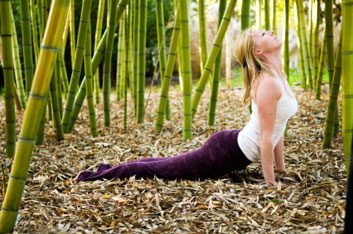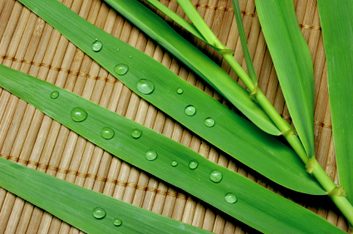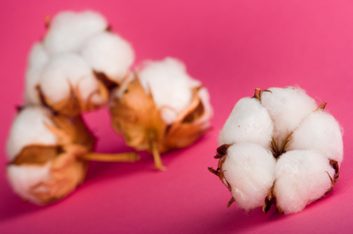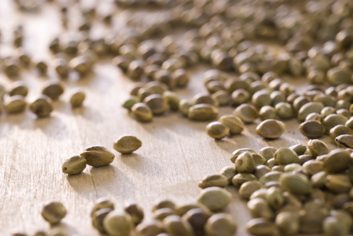
Why buy eco-friendly sportswear?
It’s not necessarily that the new “eco-fabrics” are better suited to activewear than traditional fabrics (cotton, nylon, rayon and spandex). Nor are they cheaper; in fact, they tend to cost about 20 percent more. “But by choosing an alternative garment that’s been produced with fewer chemicals or no chemicals, you’re making a better choice for the environment,” says Jason Finnis, chief operating officer and founder of Naturally Advanced Technologies (NAT), a Vancouver-based company that is developing technologies to process natural fibres in an environmentally sustainable manner.

Bamboo
When to wear it: Soft and lightweight, bamboo will keep you drier and cooler during your workout than cotton due to the fabric’s superior wicking, which makes it a good option for Pilates or hot yoga.
The upside: Considered to be a grass, bamboo can be grown with minimal pesticides and fertilizers. It’s also a sustainable plant: It grows very quickly, maturing in four to five years. And it produces 35 percent more oxygen than an equivalent amount of trees. “Adding oxygen [to the atmosphere] automatically means the reduction of carbon dioxide, a contributor to greenhouse gases,” explains Mohini Sain, director of the Centre for Biocomposites and Biomaterials Processing at the University of Toronto.
The downside: As bamboo is mainly grown and pulped in China, transporting it to North American markets burns a lot of fossil fuels. Also, turning bamboo into fabric isn’t an eco-friendly process. NAT and the Alberta Research Council are developing a more eco-friendly pulping process to produce textiles; it may be available this year.

Organic cotton
When to wear it: You wouldn’t want to wear organic cotton-or any cotton-for cardio activities (because it sucks in moisture), but this soft material is fine for low-exertion workouts such as walking. Organic cotton is good for people with chemical sensitivities because it’s grown without chemical fertilizers and pesticides.
The upside: Organically grown cotton is better for the environment. Organic farming methods contribute to healthy ecosystems, enhance soil fertility and even support biodiversity. By contrast, pesticides used to grow crops can persist in the environment and contaminate groundwater, and possibly have adverse effects on aquatic systems, according to the Natural Resources Conservation Service of the U.S. Department of Agriculture (USDA).
The downside: The drawback with any cotton is that it requires a lot of water to grow: more than 20,000 litres of water to produce one kilogram of cotton (the equivalent of a single T-shirt and pair of jeans), according to the World Wildlife Fund. Also, cotton may be transported at each stage of the manufacturing process, and that’s not “green.”

Hemp
When to wear it: During the past decade, technology has improved to produce a soft fabric from hemp that is comfortable to wear. Now, its comfort and wicking capabilities make it well suited for a cardio workout.
The upside: The hemp plant can be grown without pesticides or fertilizers. Also, it can grow in cooler climates such as Canada’s, and needs only about 10 percent of the water that cotton requires. It also grows quickly-to about four metres in 80 to 90 days-and is prolific. One hectare of land can yield between 3,000 and 6,000 kilograms of hemp, versus 1,500 kilograms of cotton, says Finnis. Similar to bamboo, hemp absorbs carbon dioxide five times more efficiently than trees, according to the NRC, and may play a role in reducing greenhouse gas emissions.
The downside: The issue with hemp is the same as bamboo: processing. Chemical processing uses an alkaline that doesn’t break down. Also, the chemical process requires a lot of energy.
Related :
• Quiz : What’s your fitness personality?
• 6 gym-bag essentials
• 5 workout tools and how to use them
